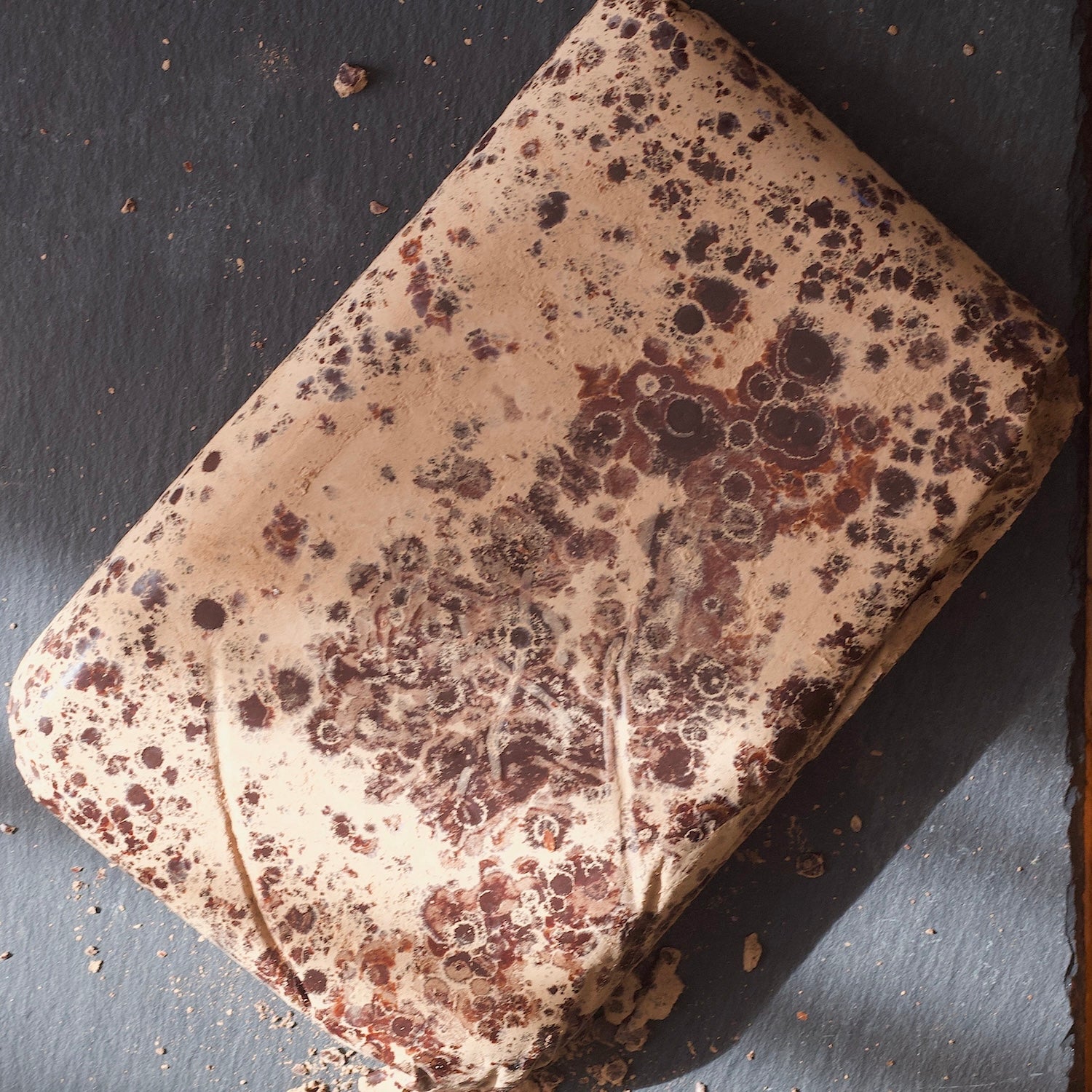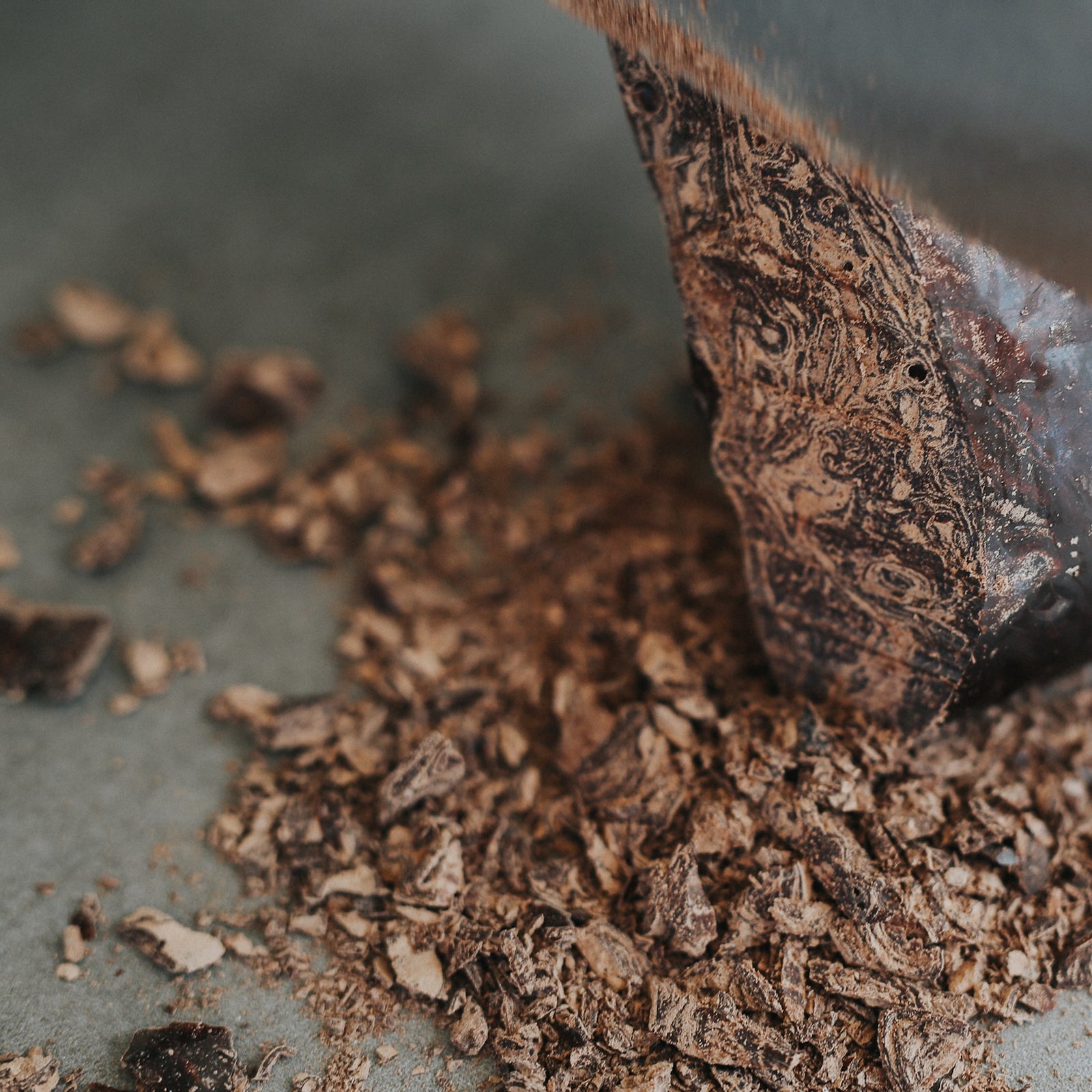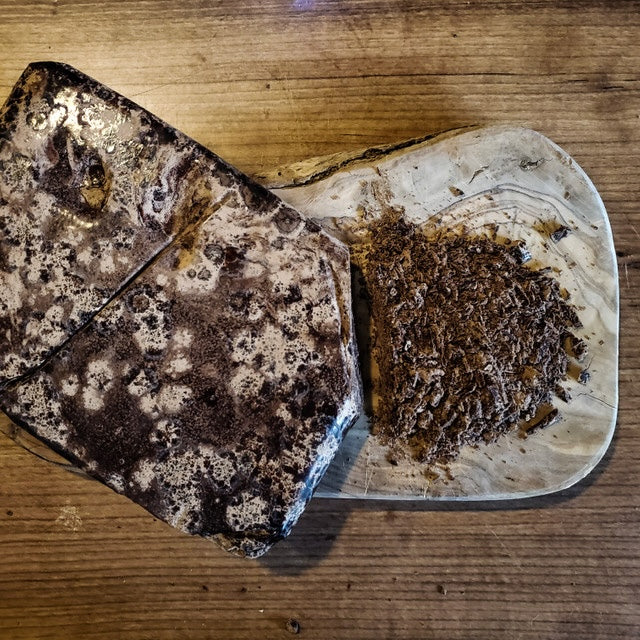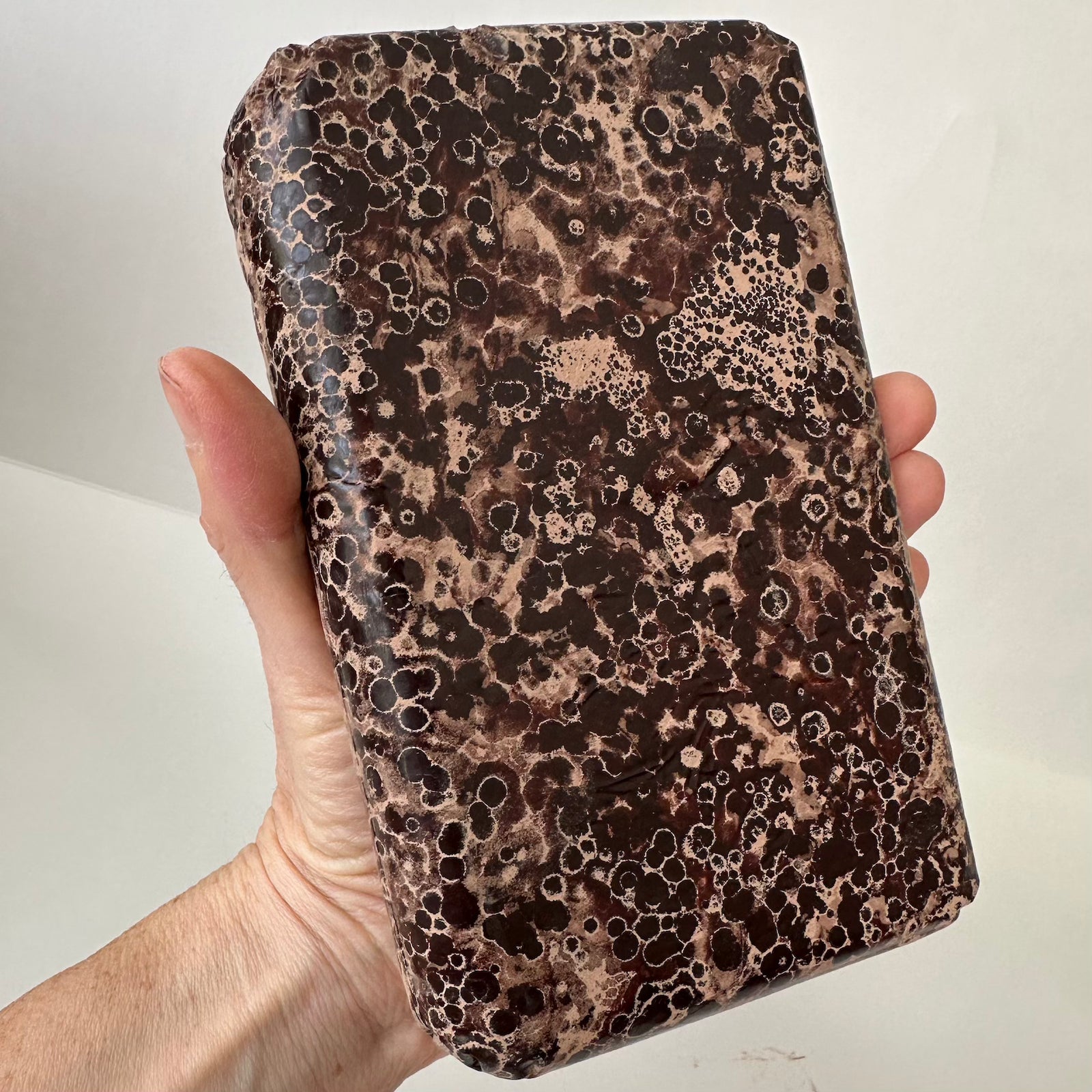Your Cart is Empty
We ship worldwide from warehouses in the USA, Canada, Europe, UK and Australia!
Cacao-making process | Ceremonial cacao | Plant medicine
Have you seen a brick of Keith's Cacao? Noticed those curious white streaks that make it look a little marbled?
No, it’s not a mistake or a sign something’s wrong. Quite the opposite. That unique look is called bloom, and it’s one of the best clues that your cacao hasn’t been over-processed.
In conventional chocolate-making, there’s a process called tempering—a method of heating and cooling cacao to form uniform fat crystals. It gives chocolate that glossy shine and satisfying snap you find in a traditional chocolate bar.
But here’s the thing: tempering changes cacao’s natural chemistry. It can deactivate the delicate compounds responsible for cacao’s uplifting, heart-opening, spirit-connecting effects.
Even some ceremonial cacao brands temper their cacao because it makes it easier to shape, melt, and work with. They are focusing on appearance and flavor, not energy. And in doing so, they sacrifice some of the very qualities that make cacao sacred.
Lucky for us, Keith’s Cacao delivers the best of both: rich, delicious taste and deeply activating energetic properties.
And here’s the kicker: when your focus is on making the finest ceremonial cacao, tempering isn’t just unnecessary—it’s beside the point. Unless you’re trying to impress on Bake-Off with glossy chocolate candies or crisp coatings, tempering serves no real purpose when you’re working with cacao for its spiritual and energetic gifts.
Research shows that higher tempering temperatures and longer tempering times significantly reduce cacao’s antioxidant activity. Antioxidants are heat-sensitive—prolonged exposure to high temps damages them. In one study, the longer and hotter the tempering process, the lower the antioxidant levels dropped.
Add other industrial processes like high roasting—done to enable machine winnowing instead of the time-consuming, hand-peeling process that Keith's Cacao uses—and you end up with a product that looks pretty… But has lost much of its original nutritional and energetic power.
At Keith’s Cacao, we don’t temper. We stay true to Keith’s time-tested guidance for a truly minimal process that preserves the full potency and living energy of cacao..
So yes, your cacao may bloom, streak, or marble—but that’s exactly how you know it’s alive, active, and ready to support you on your journey.
“We do not temper our Cacao, a process that alternately heats and cools the chocolate to ‘crystallize’ it and prevent cacao butter separation. After packaging, the cacao butter begins to separate in the blocks, first forming swirls or white rings (looks like it might be mold – it isn’t!) and eventually turning the entire block dusty grey and crumbly. This is completely normal. The changing texture does not affect the ceremonial quality or the flavor of the Cacao.”
- Keith Wilson, Founder of Keith's Cacao and human catalyst for today's Ceremonial Cacao Movement
In the Power of Cacao Training Course, you'll learn exactly why we skip tempering (and a whole bunch of other industrial shortcuts) in favor of a preparation method that’s intentional, respectful, and rooted in tradition.
With topics like:
• The Chocolate Making Process and Industrial Chocolate
• Keith’s Cacao Process vs. Industrial Chocolate Making
• Secrets of Industrial Chocolatiers
—you’ll gain a deep understanding of what makes Keith’s Cacao truly different—and why your body, heart, and spirit can feel the difference.
Enroll in the Power of Cacao Course—the world’s most comprehensive, accurate, and trusted ceremonial cacao training, today.
Because when it comes to ceremonial cacao, knowing the difference makes the difference.



